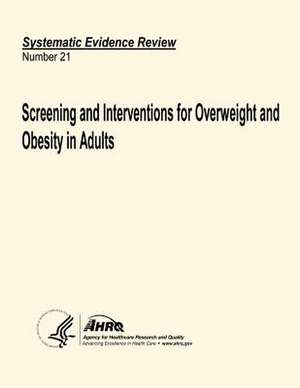Screening and Interventions for Overweight and Obesity in Adults
Autor U. S. Department of Heal Human Services, Agency for Healthcare Resea And Qualityen Limba Engleză Paperback
Preț: 137.76 lei
Preț vechi: 145.02 lei
-5% Nou
Puncte Express: 207
Preț estimativ în valută:
26.37€ • 27.42$ • 22.10£
26.37€ • 27.42$ • 22.10£
Carte disponibilă
Livrare economică 20 februarie-06 martie
Preluare comenzi: 021 569.72.76
Specificații
ISBN-13: 9781490902296
ISBN-10: 1490902295
Pagini: 132
Dimensiuni: 216 x 279 x 7 mm
Greutate: 0.32 kg
Editura: CREATESPACE
ISBN-10: 1490902295
Pagini: 132
Dimensiuni: 216 x 279 x 7 mm
Greutate: 0.32 kg
Editura: CREATESPACE
